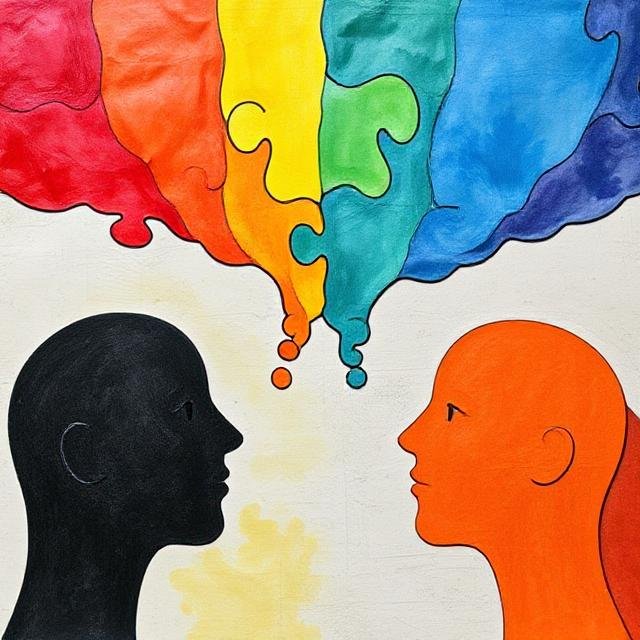Introduction
Autism Spectrum Disorder (ASD) and Bipolar Disorder (BD) are distinct neurodevelopmental and mood disorders, respectively. However, emerging research indicates a significant overlap in their clinical presentations, leading to challenges in diagnosis and treatment. This article provides an in-depth exploration of the intersection between ASD and BD, emphasizing recent findings and clinical implications.
Prevalence and Epidemiology
Recent studies suggest that individuals with ASD are at a heightened risk for developing BD. Approximately 5% to 8% of individuals with ASD also meet the criteria for BD . Notably, a study found that around 30% of young people diagnosed with bipolar I disorder are autistic . This comorbidity underscores the importance of comprehensive assessment in clinical settings.
Clinical Presentation and Symptom Overlap
ASD and BD share several overlapping symptoms, including:
- Mood Instability and Emotional Dysregulation: Both disorders exhibit challenges in regulating emotions, leading to mood swings and irritability.
- Impulsivity and Aggressive Behavior: Individuals may display impulsive actions and aggression, complicating behavioral management.
- Social Communication Difficulties: Deficits in social interactions and communication are prominent in both conditions.
- Cognitive and Executive Functioning Impairments: Challenges in planning, decision-making, and problem-solving are common.
- Sleep Disturbances: Both disorders are associated with irregular sleep patterns.
- Sensory Sensitivities: Heightened or diminished sensory responses are frequently observed .
These shared features can complicate the diagnostic process, necessitating careful evaluation by clinicians.
Neurobiological Underpinnings
Research indicates that ASD and BD may share common neurobiological pathways, including:
- Neuroinflammation: Elevated levels of inflammatory markers have been observed in both disorders, suggesting a role in symptomatology .
- Genetic Factors: Certain genetic mutations and polymorphisms have been implicated in both ASD and BD, pointing to potential shared genetic risk factors .
- Neurotransmitter Dysregulation: Imbalances in neurotransmitters such as dopamine and serotonin are noted in both conditions, influencing mood and behavior.
Understanding these shared neurobiological mechanisms is crucial for developing targeted treatment strategies.
Diagnostic Challenges
Diagnosing comorbid ASD and BD presents several challenges:
- Symptom Overlap: The overlap in symptoms can lead to misdiagnosis or underdiagnosis.
- Communication Barriers: Individuals with ASD may have difficulty expressing their emotional states, complicating the assessment of mood disorders.
- Diagnostic Criteria Variability: Differences in diagnostic criteria across DSM-5 and ICD-11 can affect the identification of comorbid conditions.
Clinicians must employ comprehensive assessment tools and consider the full spectrum of symptoms to achieve an accurate diagnosis.
Treatment Approaches
Pharmacological Interventions
Pharmacological treatment in individuals with comorbid ASD and BD requires careful consideration:
- Mood Stabilizers and Antipsychotics: Medications such as lithium and valproate are commonly used to manage BD symptoms. However, their use in individuals with ASD should be monitored due to potential side effects .
- Antidepressants: These may be prescribed for depressive episodes in BD; however, their efficacy and safety in individuals with ASD require further research.
- Medication Monitoring: Close monitoring is essential to assess efficacy and manage potential side effects, given the unique response profiles in this population.
Psychosocial Therapies
Psychosocial interventions play a vital role in managing comorbid ASD and BD:
- Cognitive Behavioral Therapy (CBT): Adapted CBT approaches can help individuals manage mood symptoms and develop coping strategies.
- Applied Behavior Analysis (ABA): ABA techniques can address behavioral issues associated with ASD and BD.
- Social Skills Training: Programs designed to enhance social interactions can be beneficial for individuals with both disorders.
Integrating pharmacological and psychosocial treatments offers a holistic approach to care.
Implications for Clinical Practice
Healthcare providers must adopt a multidisciplinary approach when treating individuals with comorbid ASD and BD:
- Comprehensive Assessment: Utilize a combination of clinical interviews, standardized assessments, and behavioral observations.
- Individualized Treatment Plans: Tailor interventions to address the unique needs of each individual, considering both ASD and BD symptoms.
- Family Involvement: Engage families in the treatment process to provide support and enhance treatment outcomes.
Collaboration among psychiatrists, psychologists, and other healthcare professionals is essential for effective management.
Conclusion
The intersection of Autism Spectrum Disorder and Bipolar Disorder presents unique challenges in diagnosis and treatment. Recognizing the overlapping symptoms and shared neurobiological mechanisms can inform more effective and individualized care strategies. Ongoing research is essential to further elucidate the complexities of these comorbid conditions and to develop evidence-based interventions.













